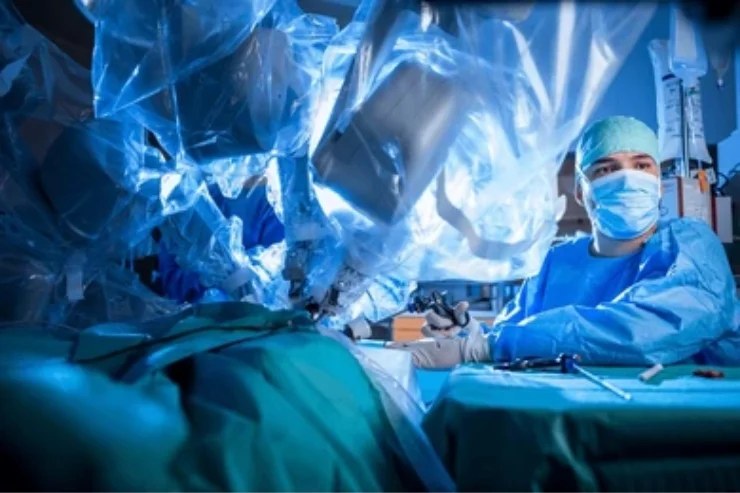Robotic Radical Cystoprostatectomy with Urinary Diversion
- Home
- Robotic Radical Cystoprostatectomy with Urinary Diversion

Robotic Radical Cystoprostatectomy (RRC) is an advanced robotic-assisted procedure used to treat muscle-invasive bladder cancer and select cases of high-risk non-invasive bladder cancer. This surgery involves the removal of the bladder and prostate, followed by urinary diversion to reroute urine flow. Using robotic technology, this procedure enhances precision, reduces blood loss, and promotes faster recovery compared to traditional open surgery.
Who Needs This Procedure?
This surgery is recommended for patients with:
Muscle-invasive bladder cancer (MIBC)
High-risk non-muscle-invasive bladder cancer (NMIBC) unresponsive to treatment
Recurrent bladder cancer despite therapy
Locally advanced bladder cancer requiring organ removal
Performed by Dr. Sachin Arakere Nataraj, a specialist in robotic urologic oncology, this procedure offers a safer, less invasive option for bladder cancer treatment.
Types of Urinary Diversion
Following cystoprostatectomy, urine is rerouted using one of these methods:
🔹 Ileal Conduit: A segment of the intestine is used to create a passage for urine, requiring an external bag for collection.
🔹 Neobladder Reconstruction: A new bladder is formed from the intestine, allowing near-normal urination through the urethra.
🔹 Continent Urinary Reservoir (Indiana Pouch): A pouch is created inside the body, emptied using a catheter.
Benefits of Robotic Radical Cystoprostatectomy (Pros)
✅ Minimally Invasive: Smaller incisions, reduced pain, and faster healing than open surgery.
✅ Enhanced Precision: Robotic assistance improves nerve preservation and reduces complications.
✅ Lower Blood Loss & Fewer Complications: Reduces risk of infections, hernias, and scarring.
✅ Faster Recovery: Quicker return to daily activities with a shorter hospital stay.
✅ Improved Post-Surgical Outcomes: Better continence and erectile function preservation in select cases.
Potential Risks & Considerations (Cons)
❌ Highly Complex Surgery: Requires an experienced robotic surgeon like Dr. Sachin Arakere Nataraj.
❌ Urinary Diversion Adjustment: Patients need time to adapt to the new way of passing urine.
❌ Risk of Infection or Leakage: Though rare, complications can occur in urinary diversion techniques.
❌ Longer Surgery Time: The procedure may take longer than open surgery due to meticulous reconstruction.
Why Choose Dr. Sachin Arakere Nataraj?
Dr. Sachin Arakere Nataraj is an expert in robotic-assisted urologic oncology, offering:
✔ Advanced robotic surgical precision for improved cancer control
✔ Minimized complications and enhanced post-operative recovery
✔ Expertise in various urinary diversion techniques for personalized patient care
For the most advanced bladder cancer treatment options, consult Dr. Sachin Arakere Nataraj and explore the benefits of robotic radical cystoprostatectomy.
Lorem ipsum dolor sit amet, consectetur adipiscing elit. Ut elit tellus, luctus nec ullamcorper mattis, pulvinar dapibus leo.

